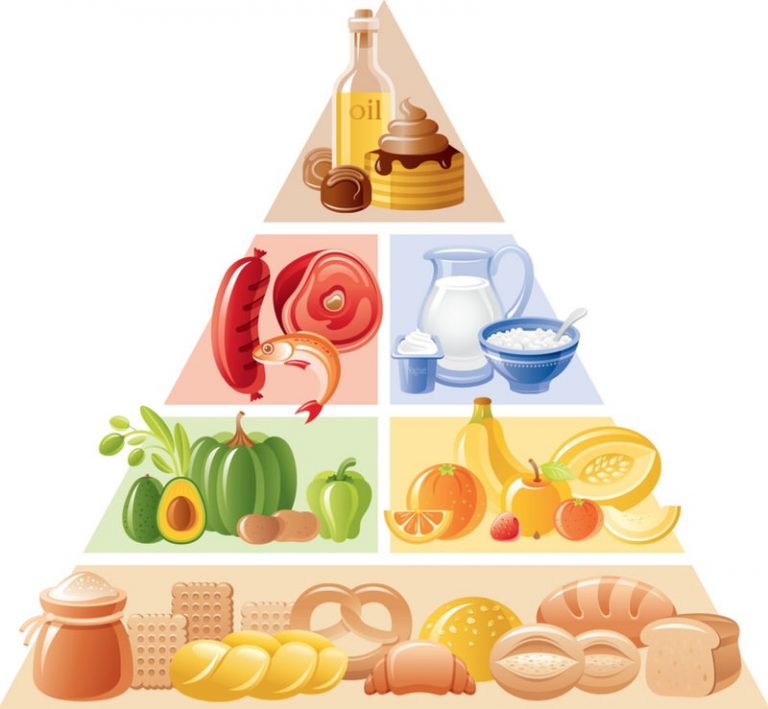The nutritional pyramid (food or food pyramid) is a graph that helps us to know which food groups we should consume. Find out what it is.

As we have commented in a previous moment, our organism has a series of determined nutritional needs that are practically fundamental to be able to survive and live day by day.
Precisely for this reason, many are the experts in nutrition and dietetics, and in general health itself, who defend that following a natural diet, but above all a balanced diet helps to ensure that our body receives the nutrients it needs on a daily basis.
For this reason, there is a chart that can help us to know which foods we should consume daily to be healthy, healthy and natural, others in moderation, and which we should consume in small quantities or even eliminate them from our diet.
It is called the nutritional pyramid or food pyramid, and we propose below to know what it consists of and, above all, what are the different food groups that are distributed at the beginning and at the end of it.
Nutritional pyramid or classic food pyramid
Until recently, the traditional nutritional pyramid consisted of the following food group:
As we can see in the image that accompanies this article, in which we show a graph related to the nutritional pyramid or food pyramid (as you like), we find that:
- The lower echelons mostly propose complex carbohydrates (cereals, grains, flours and derivatives, fruits and vegetables …).
- The central steps suggest those foods that contain less carbohydrates, but more protein and fat.
- The upper steps are those that contain amount of protein and amount of fat.
- The highest step of all is constituted by those foods that we must consume in a very moderate way, since they mainly contribute calories.
However, an increasing number of nutritionists agree to cross out the old nutritional pyramid as an incomplete and outdated food pyramid, in addition to being erroneous in arguing that there are some foods that are more important than others.
The new Healthy Eating Pyramid
With all this, the Spanish Community Nutrition Society (SENC) presented a healthy eating pyramid within its new Dietary Guidelines, including for the first time nutritional supplements, among which we find vitamin D, a very necessary supplement for newborns, children and the elderly.
As a novelty, this new pyramid also includes an element as important as daily physical activity, in addition to other important points such as drinking 4 to 6 glasses of water a day, maintaining healthy culinary techniques, having a correct emotional balance and carry out an adequate energy balance.
In addition, fermented beverages (such as beer and wine) are included as “optional, moderate and responsible consumption in adults”, something that has already been criticized by many nutritionists. In other words, the “healthy” recommendation to include a moderate consumption of fermented alcoholic beverages in the diet would have been approved.
And what other foods or healthy habits does this new food pyramid include, in what quantity and portions?
- Maintain healthy lifestyles: Especially practice daily physical activity for at least 60 minutes, maintain a correct emotional balance and an adequate energy balance, drink between 4 to 6 glasses of water every day (according to the fluid intake according to the Pyramid of Healthy Hydration SENC) and cook food opting for healthy culinary techniques.
- According to the degree of physical activity: Eat whole grains, whole wheat pasta, nuts, brown rice, whole grain flours, root vegetables such as potatoes and legumes.
- 5 servings every day: Fresh fruits and vegetables. It is recommended at least 2 to 3 servings of greens and vegetables, extra virgin olive oil, and 3 to 4 servings of fruit each day.
- Varied consumption per day: 2 to 3 daily servings of dairy products (milk, cheese and yogurt), and alternate 1 to 3 servings per day of eggs, white meat, fish, legumes and nuts.
- Optional, occasional and moderate consumption: In this group we find foods such as sausages and red meat.
- Optional, moderate and responsible consumption in adults: Surprisingly, fermented drinks -with alcohol- such as beers and wines are included.































